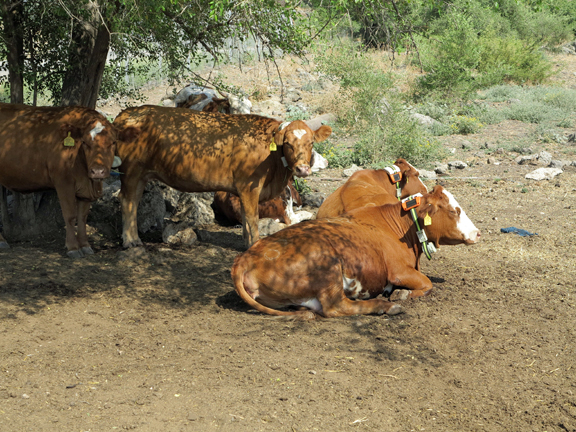[Satnews] Globalstar Europe Satellite Services Ltd., a wholly owned subsidiary of Globalstar Inc. (NYSE MKT: GSAT), announces the company will be supplying its STX3 chipset for integration into an upcoming cattle monitoring solution.
Highly innovative MOOnitor, which will go into production in 2016, uses neck-mounted collars to measure cattle activity and convert it to herd management information, allowing ranchers to quickly react to developing situations and events. Ranchers can use the information to increase production and optimize the number of weaned calves.

Each MOOnitor collar uses an accelerometer and GPS tracker to measure how much time each cow rests, grazes and walks, in addition to finding its location. This information helps ranchers understand key parameters related to animal behavior such as quality of food and weight gain patterns, estrus events and pregnancies and other medical conditions. MOOnitor recommends deploying collars across 10 to 20 percent of the herd, then using the results to statistically manage the whole herd.
In addition to the Globalstar STX3 chipset, the collar includes two solar panels measuring just 85 by 65 mm, a GPS chip and RF communications for on site maintenance. A compression algorithm reduces the 50MB of data gathered on each cow daily into a single transmission of just 36 bytes. This low energy, lean design ensures that the collar can function for seven days, even without sunshine, and only needs two hours of sun to fully recharge.
Given the remote location and roaming of cattle, satellite is the only reliable communications option without deploying local infrastructure. MOOnitor chose the STX3 chip to transmit data because of its small size and low power requirements. The data is then analyzed in the back office system to calculate the energy balance of the cow and determine how much weight it has gained or lost.
Globalstar’s STX3 simplex satellite transmitter features the lowest power-consuming technology on the market.
It is designed to be easily integrated into a broad range of devices and applications for economical remote sensing, tracking and monitoring of a wide range of items – all the while leveraging the power of M2M / the Internet of Things (IoT). Today, in locations across the globe, STX3 equipped devices are tracking high value assets ranging from ships to hazardous cargo containers, as well as truck fleets and livestock.
The worlds of M2M, IoT and satellite communications are resulting in exciting new developments in agriculture and farming. We have seen how quickly human health monitoring has taken off, and now cattle and ranchers can benefit from these technologies. As ranchers understand their animals’ well being, they can maximize beef production and help their bottom line,” said Corry Brennan, Simplex Regional Sales Manager, EMEA at Globalstar.
Executive Comment
“Cattle in countries such as the US, Australia and South America graze in remote locations not used for any other agriculture. Because cows are such independent beasts, ranchers tend to have little information about how their herd is faring, especially in extensive herds. By taking advantage of Globalstar’s extensive and highly advanced second generation satellite network, we deliver the information needed to effectively manage the herd and improve production right to the ranchers’ fingertips,” said Dr Sinay Goldberg, CEO, MOOnitor. "Although this technology would never replace a rancher, it allows for vital information such asearlier detection of sick cows. When they are sick, cows tend to hide in a herd so they are not vulnerable to predators. This behaviour also makes it difficult for ranchers to detect sick cows. The collar and back office software detects whether a cow is sick, in estrus, pregnant and lactating. Even with a collar on only a small percentage of the herd, the rancher can extrapolate data to make knowledgeable decisions previously not possible."


